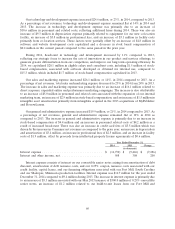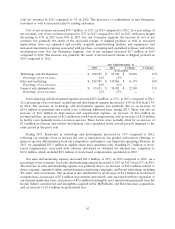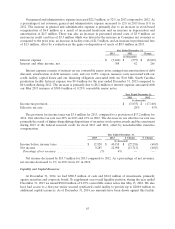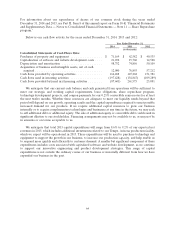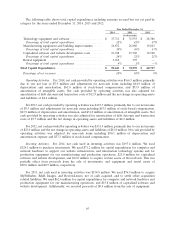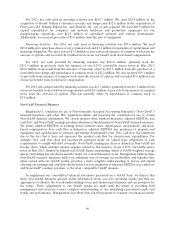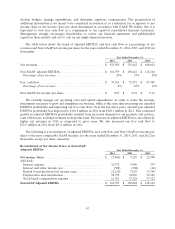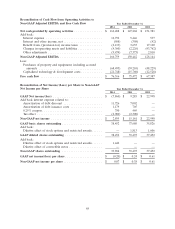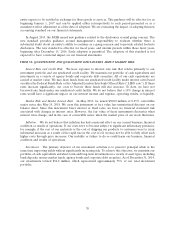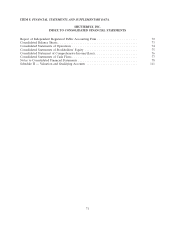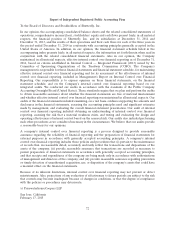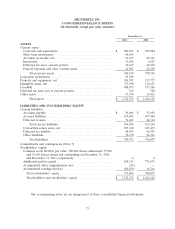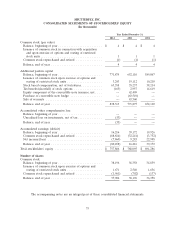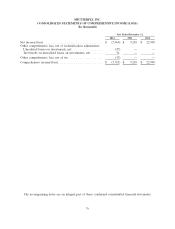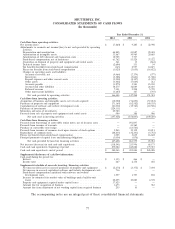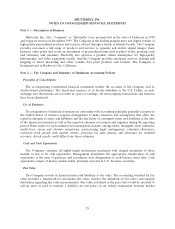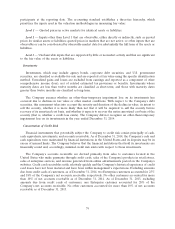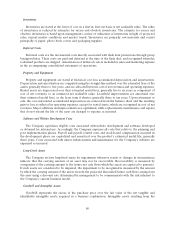Shutterfly 2014 Annual Report Download - page 71
Download and view the complete annual report
Please find page 71 of the 2014 Shutterfly annual report below. You can navigate through the pages in the report by either clicking on the pages listed below, or by using the keyword search tool below to find specific information within the annual report.entity expects to be entitled in exchange for those goods or services. This guidance will be effective for us
beginning January 1, 2017 and can be applied either retrospectively to each period presented or as a
cumulative-effect adjustment as of the date of adoption. We are evaluating the impact of adopting this new
accounting standard on our financial statements.
In August 2014, the FASB issued new guidance related to the disclosures around going concern. The
new standard provides guidance around management’s responsibility to evaluate whether there is
substantial doubt about an entity’s ability to continue as a going concern and to provide related footnote
disclosures. The new standard is effective for fiscal years, and interim periods within those fiscal years,
beginning after December 15, 2016. Early adoption is permitted. The adoption of this standard is not
expected to have a material impact on our financial statements.
ITEM 7A. QUANTITATIVE AND QUALITATIVE DISCLOSURES ABOUT MARKET RISK.
Interest Rate and Credit Risk. We have exposure to interest rate risk that relates primarily to our
investment portfolio and our syndicated credit facility. We maintain our portfolio of cash equivalents and
investments in a variety of agency bonds and corporate debt securities. All of our cash equivalents are
carried at market value. We may draw funds from our syndicated credit facility under interest rates based
on either the Federal Funds Rate or the Adjusted London Interbank Offered Rate (‘‘LIBO rate’’). If these
rates increase significantly, our costs to borrow these funds will also increase. To date, we have not
borrowed any funds under our syndicated credit facility. We do not believe that a 10% change in interest
rates would have a significant impact on our interest income and expense, operating results, or liquidity.
Market Risk and Market Interest Risk. In May 2013, we issued $300.0 million of 0.25% convertible
senior notes due May 15, 2018. We carry this instrument at face value less unamortized discount on our
balance sheet. Since this instrument bears interest at fixed rates, we have no financial statement risk
associated with changes in interest rates. However, the fair value of these instruments fluctuates when
interest rates change, and in the case of convertible notes, when the market price of our stock fluctuates.
Inflation. We do not believe that inflation has had a material effect on our current business, financial
condition or results of operations. If our costs were to become subject to significant inflationary pressures,
for example, if the cost of our materials or the cost of shipping our products to customers were to incur
substantial increases as a result of the rapid rise in the cost of oil, we may not be able to fully offset such
higher costs through price increases. Our inability or failure to do so could harm our business, financial
condition and results of operations.
Investment. The primary objective of our investment activities is to preserve principal while at the
same time improving yields without significantly increasing risk. To achieve this objective, we maintain our
portfolio of cash equivalents and short-term and long-term investments in a variety of asset types, including
bank deposits, money market funds, agency bonds and corporate debt securities. As of December 31, 2014,
our investments totaled $94.8 million, which represented approximately 73% of our total investment
portfolio.
70


